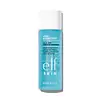What's inside
What's inside
 Key Ingredients
Key Ingredients

 Benefits
Benefits

 Concerns
Concerns

 Ingredients Side-by-side
Ingredients Side-by-side

Water
Skin ConditioningIsohexadecane
EmollientIsododecane
EmollientCetyl Ethylhexanoate
EmollientSqualane
EmollientSodium Hyaluronate
HumectantNiacinamide
SmoothingPanthenol
Skin ConditioningDecyl Glucoside
CleansingSodium Chloride
MaskingPotassium Phosphate
BufferingDipotassium Phosphate
BufferingDisodium EDTA
Hexyldecanol
EmollientPolyaminopropyl Biguanide
PreservativeParfum
MaskingCI 42090
Cosmetic ColorantWater
Skin ConditioningPolyglyceryl-4 Caprate
EmulsifyingButylene Glycol
HumectantDipropylene Glycol
HumectantSea Water
HumectantBetaine
HumectantChlorphenesin
AntimicrobialEthylhexylglycerin
Skin Conditioning1,2-Hexanediol
Skin ConditioningCentella Asiatica Extract
CleansingParfum
MaskingDisodium EDTA
Sodium Hyaluronate
HumectantPentylene Glycol
Skin ConditioningLinalool
PerfumingCaprylyl Glycol
EmollientButylphenyl Methylpropional
PerfumingHexyl Cinnamal
PerfumingMacrocystis Pyrifera Extract
Skin ConditioningUndaria Pinnatifida Extract
Skin ConditioningSpirulina Platensis Extract
Skin ProtectingLaminaria Japonica Extract
Skin ProtectingGelidium Cartilagineum Extract
Skin ProtectingEnteromorpha Compressa Extract
Skin ProtectingSodium Citrate
BufferingCitric Acid
BufferingWater, Polyglyceryl-4 Caprate, Butylene Glycol, Dipropylene Glycol, Sea Water, Betaine, Chlorphenesin, Ethylhexylglycerin, 1,2-Hexanediol, Centella Asiatica Extract, Parfum, Disodium EDTA, Sodium Hyaluronate, Pentylene Glycol, Linalool, Caprylyl Glycol, Butylphenyl Methylpropional, Hexyl Cinnamal, Macrocystis Pyrifera Extract, Undaria Pinnatifida Extract, Spirulina Platensis Extract, Laminaria Japonica Extract, Gelidium Cartilagineum Extract, Enteromorpha Compressa Extract, Sodium Citrate, Citric Acid
 Reviews
Reviews

Ingredients Explained
These ingredients are found in both products.
Ingredients higher up in an ingredient list are typically present in a larger amount.
Disodium EDTA plays a role in making products more stable by aiding other preservatives.
It is a chelating agent, meaning it neutralizes metal ions that may be found in a product.
Disodium EDTA is a salt of edetic acid and is found to be safe in cosmetic ingredients.
Learn more about Disodium EDTAParfum is a catch-all term for an ingredient or more that is used to give a scent to products.
Also called "fragrance", this ingredient can be a blend of hundreds of chemicals or plant oils. This means every product with "fragrance" or "parfum" in the ingredients list is a different mixture.
For instance, Habanolide is a proprietary trade name for a specific aroma chemical. When used as a fragrance ingredient in cosmetics, most aroma chemicals fall under the broad labeling category of “FRAGRANCE” or “PARFUM” according to EU and US regulations.
The term 'parfum' or 'fragrance' is not regulated in many countries. In many cases, it is up to the brand to define this term.
For instance, many brands choose to label themselves as "fragrance-free" because they are not using synthetic fragrances. However, their products may still contain ingredients such as essential oils that are considered a fragrance by INCI standards.
One example is Calendula flower extract. Calendula is an essential oil that still imparts a scent or 'fragrance'.
Depending on the blend, the ingredients in the mixture can cause allergies and sensitivities on the skin. Some ingredients that are known EU allergens include linalool and citronellol.
Parfum can also be used to mask or cover an unpleasant scent.
The bottom line is: not all fragrances/parfum/ingredients are created equally. If you are worried about fragrances, we recommend taking a closer look at an ingredient. And of course, we always recommend speaking with a professional.
Learn more about ParfumSodium Hyaluronate is hyaluronic acid's salt form. It is commonly derived from the sodium salt of hyaluronic acid.
Like hyaluronic acid, it is great at holding water and acts as a humectant. This makes it a great skin hydrating ingredient.
Sodium Hyaluronate is naturally occurring in our bodies and is mostly found in eye fluid and joints.
These are some other common types of Hyaluronic Acid:
Learn more about Sodium HyaluronateWater. It's the most common cosmetic ingredient of all. You'll usually see it at the top of ingredient lists, meaning that it makes up the largest part of the product.
So why is it so popular? Water most often acts as a solvent - this means that it helps dissolve other ingredients into the formulation.
You'll also recognize water as that liquid we all need to stay alive. If you see this, drink a glass of water. Stay hydrated!
Learn more about Water